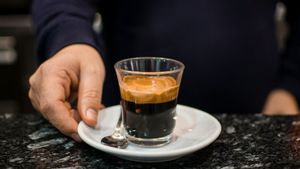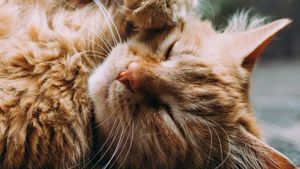YOGYAKARTA Toraja woven cloth is a traditional handicraft product typical of the Toraja tribe, an ethnic group that inhabits the South Sulawesi region. Toraja Weaving is one of the cultural heritages that is still sustainable today. This cynderamata can be found in the tourist village of Sadan, North Toraja Regency, which is known as a center that produces weaving crafts.
In Toraja culture, woven fabrics have a very high position. Weaving fabrics play an important role in various traditional ceremonies that also serve as a symbol of prosperity and glory.
In the past, Toraja woven fabrics were only owned by certain people such as aristocrats or rich people. Now, Toraja's weaving can be used as a handpiece when visiting the Land of Toraja.
Compiled from various sources, Toraja's woven fabric can be recognized through the following characteristics:
The process of producing Toraja woven cloth still uses traditional methods, so the manufacture of this type of woven cloth takes a long time.
In addition, the manufacturing technique is also quite difficult because the woven threads are pulled alternately between the logs.
If you want to make Toraja woven fabric a hand, you can find this handicraft product in North Toraja Regency, Mamasa Regency, and Tana Toraja Regency.
In general, Toraja woven fabrics consist of 2 types of cloth, namely Paruki cloth and sarita cloth. Saruki cloth describes the bond of kinship in the Toraja Tribe. While sarita cloth is only allowed to be worn by traditional leaders and religious leaders, so it is considered sacred.
On the paruki cloth, the motif looks like Toraja's distinctive carving decoration known as pa's cassava kandure. This motif symbolizes the greatness of Toraja women and is often used as a coffin cover at the traditional Solo Rambu ceremony.
While sarita cloth has a more diverse motif, there are animal motifs (generally buffalo, chicken, and pork), solar carving motifs, and tau-tau motifs.
The motifs on the sarita cloth symbolize the social status or level of social and economic welfare of the cloth owner.
The price of Toraja woven fabrics varies quite widely, ranging from hundreds of thousands to millions of rupiah, depending on the quality of the materials used.
Toraja woven cloth is priced quite expensive because the manufacturing process takes a long time because it still uses traditional methods.
In addition, Toraja woven fabrics generally still use natural dyes originating from plant leaves and roots, such as convex roots, turmeric, mango leaves, and so on.
BACA JUGA:
The natural colors used reflect the natural wealth of the local area. This natural coloring gives an organic touch to Toraja's woven fabric.
That's information about Toraja's woven fabric. Get news updates of other options only on VOI.ID.
The English, Chinese, Japanese, Arabic, and French versions are automatically generated by the AI. So there may still be inaccuracies in translating, please always see Indonesian as our main language. (system supported by DigitalSiber.id)













